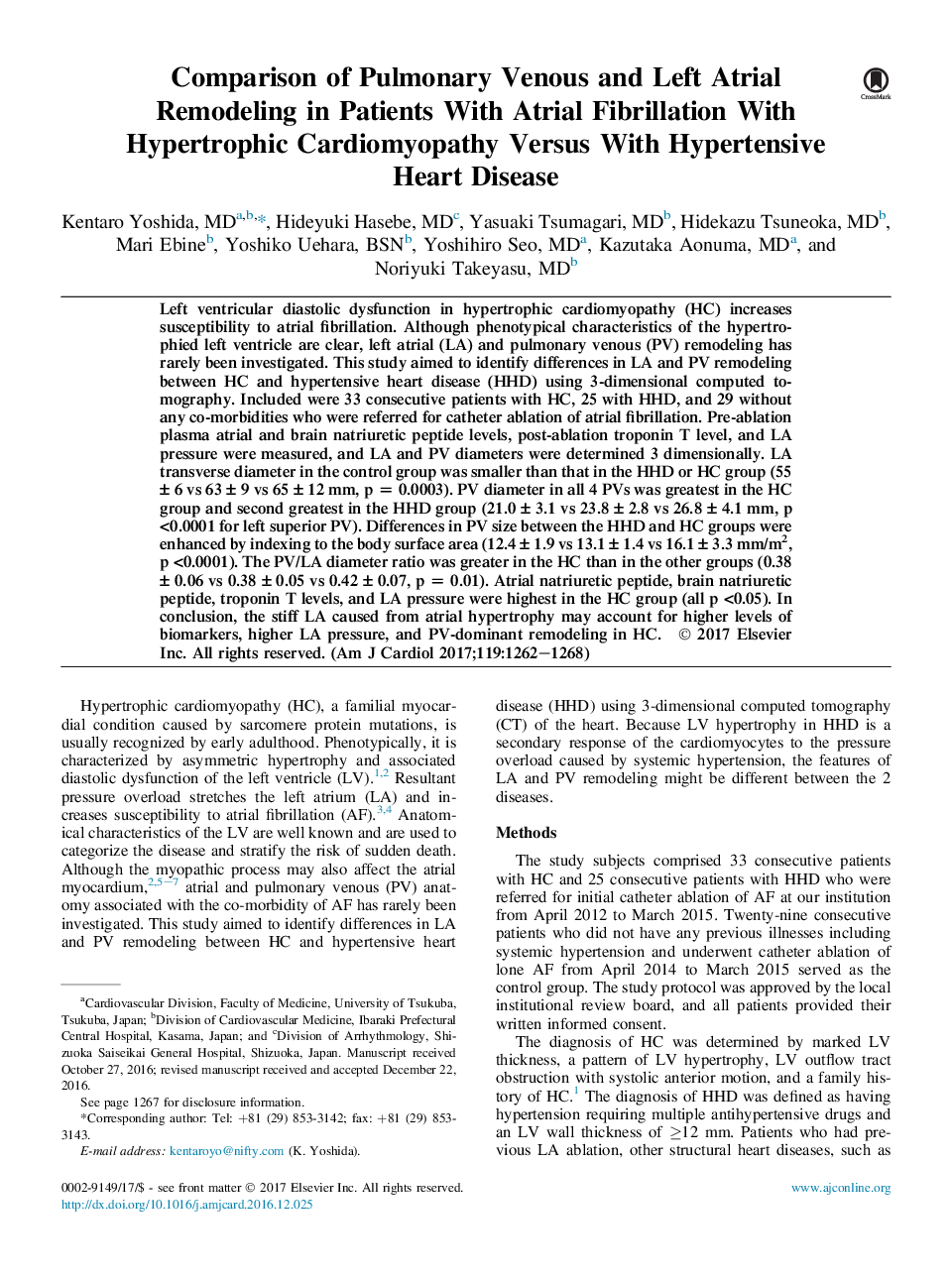| Article ID | Journal | Published Year | Pages | File Type |
|---|---|---|---|---|
| 5594985 | The American Journal of Cardiology | 2017 | 7 Pages |
Abstract
Left ventricular diastolic dysfunction in hypertrophic cardiomyopathy (HC) increases susceptibility to atrial fibrillation. Although phenotypical characteristics of the hypertrophied left ventricle are clear, left atrial (LA) and pulmonary venous (PV) remodeling has rarely been investigated. This study aimed to identify differences in LA and PV remodeling between HC and hypertensive heart disease (HHD) using 3-dimensional computed tomography. Included were 33 consecutive patients with HC, 25 with HHD, and 29 without any co-morbidities who were referred for catheter ablation of atrial fibrillation. Pre-ablation plasma atrial and brain natriuretic peptide levels, post-ablation troponin T level, and LA pressure were measured, and LA and PV diameters were determined 3 dimensionally. LA transverse diameter in the control group was smaller than that in the HHD or HC group (55 ± 6 vs 63 ± 9 vs 65 ± 12 mm, p = 0.0003). PV diameter in all 4 PVs was greatest in the HC group and second greatest in the HHD group (21.0 ± 3.1 vs 23.8 ± 2.8 vs 26.8 ± 4.1 mm, p <0.0001 for left superior PV). Differences in PV size between the HHD and HC groups were enhanced by indexing to the body surface area (12.4 ± 1.9 vs 13.1 ± 1.4 vs 16.1 ± 3.3 mm/m2, p <0.0001). The PV/LA diameter ratio was greater in the HC than in the other groups (0.38 ± 0.06 vs 0.38 ± 0.05 vs 0.42 ± 0.07, p = 0.01). Atrial natriuretic peptide, brain natriuretic peptide, troponin T levels, and LA pressure were highest in the HC group (all p <0.05). In conclusion, the stiff LA caused from atrial hypertrophy may account for higher levels of biomarkers, higher LA pressure, and PV-dominant remodeling in HC.
Related Topics
Health Sciences
Medicine and Dentistry
Cardiology and Cardiovascular Medicine
Authors
Kentaro MD, Hideyuki MD, Yasuaki MD, Hidekazu MD, Mari Ebine, Yoshiko BSN, Yoshihiro MD, Kazutaka MD, Noriyuki MD,
